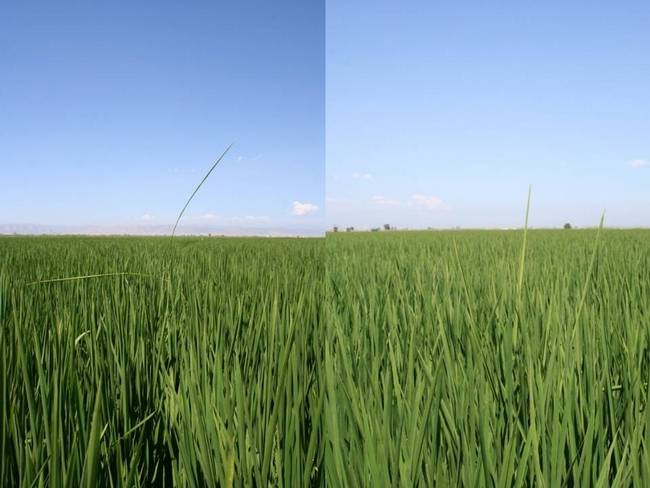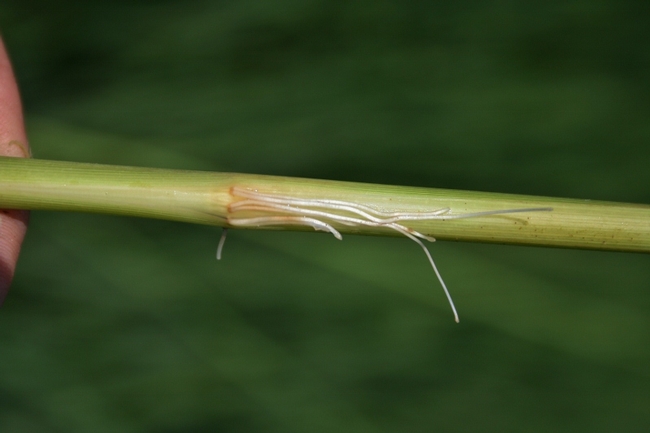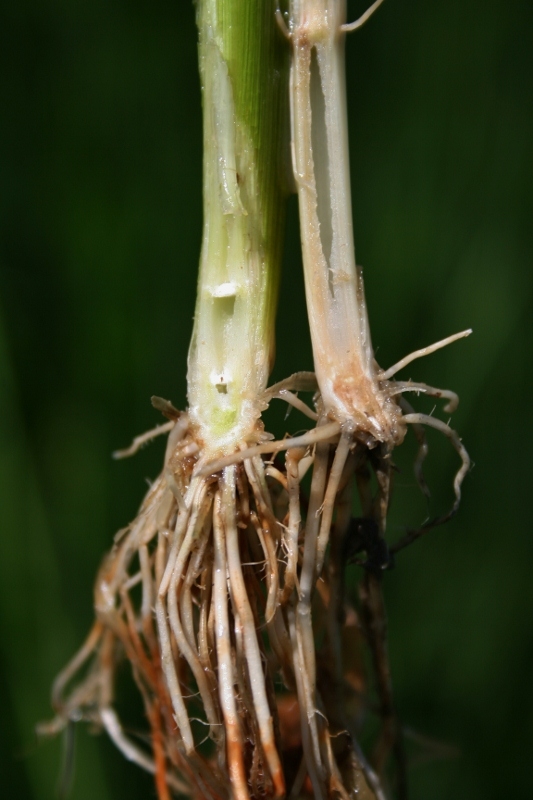A couple of weeks ago, a PCA brought me some grassy "weeds" from a field. The plants had ligules, so they weren't watergrass or barnyardgrass. The leaves were thin and long, but did not look like sprangletop; they just looked like "elongated" rice plants. In fact, that's probably what they were: plants infected with bakanae disease. I was in a field this morning with some of these plants, and had a chance to take some pictures.
Bakanae is caused by a fungus that grows within the plant and produces gibberellin, which makes the plant grow longer than usual. In the field, you will notice rice plants that look taller with thin leaf blades.
Another symptom of the disease is the production of roots from some of the nodes.
The fungus also produces fusaric acid, which causes stunning. Infected plants also develop crown rot.
Left - healthy crown. Right - crown rot of bakanae infested plant.
Infected plants usually die before heading, but if they survive they produce a blank panicle or no panicle at all. Bakanae is a seedborne disease that moves around with infested seed. The most effective way to prevent the disease is to plant seed that has been treated with a sodium hypochlorite (bleach) soak.


